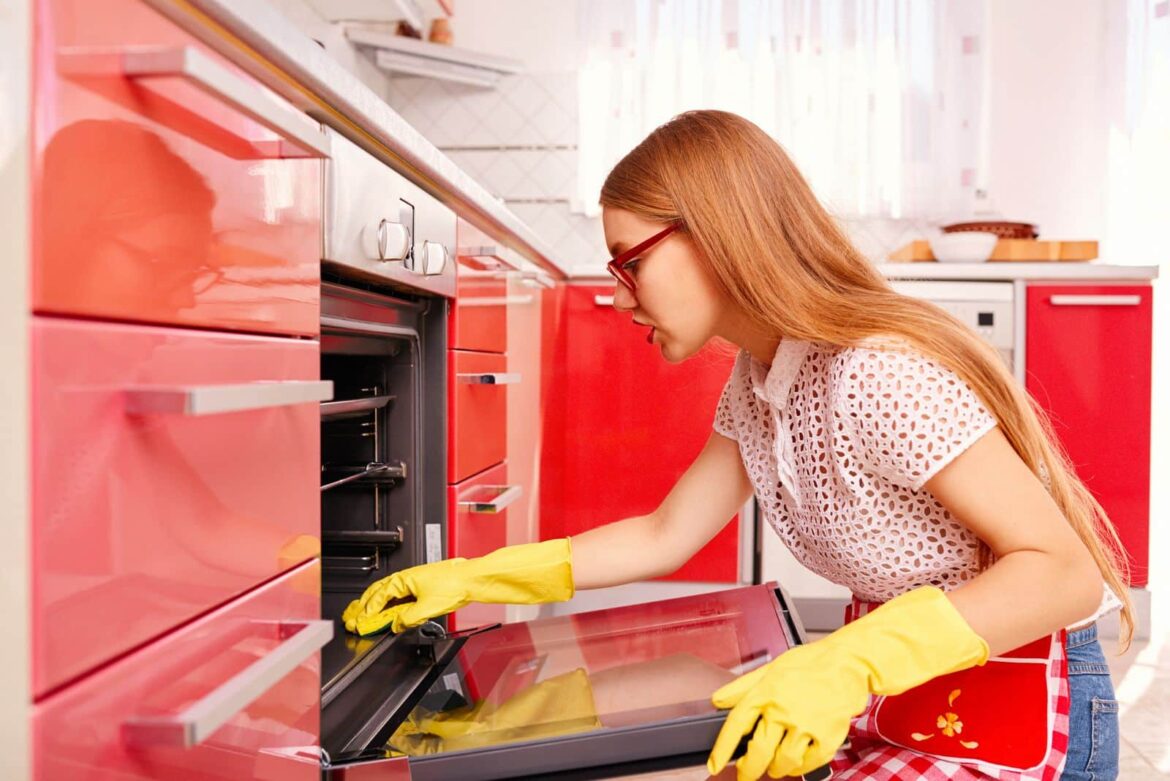464
With a few household remedies, you can easily clean your oven without using chemicals or aggressive cleaning agents.
Cleaning your oven with lemon juice
Cleaning your oven with lemon is simple and effective.
- Take a bowl and fill it about halfway with lemon juice.
- Mix the juice with a little water.
- Pour the mixture onto a baking tray and heat your oven to around 120 degrees.
- Once the lemon water has evaporated, wipe away the burnt stains with a damp, clean cloth.
- For more intensive cleaning, you can increase the temperature to 200 degrees and leave the mixture in the oven for about 15 minutes. The steam that is produced will help loosen stubborn dirt.
Shaving cream for cleaning oven stains
Shaving foam is another household remedy that is suitable for cleaning your oven.
- Apply shaving foam to the stubborn stains in the oven and leave the foam to work.
- Take a damp cloth and remove the foam after the application time.
- Finally, wipe the entire oven with a damp cloth to remove any remaining shaving cream.
- Important: Shaving cream is not suitable for all oven materials. Therefore, test the product on an inconspicuous area before use to avoid damage to the material.
Vinegar, soap, and baking soda as cleaning agents for the oven
These household remedies, which almost everyone has at home, are also suitable for cleaning the oven:
- Mix vinegar and dish soap. Dampen a sponge and rub it over the encrusted areas until it foams. Allow the foam to work for a short time and the baked-on dirt will come off.
- You can also clean your oven with baking soda. Mix a packet of baking soda with three tablespoons of water and spread the mixture over the dirt. Leave it to work for about half an hour and then wipe with a damp cloth.
- Note: Depending on the degree of soiling, baking powder or baking soda may need to be left on for longer than 30 minutes to remove stubborn dirt.
Clean your oven with salt
Salt can help remove encrustations in the oven.
- First wipe the inside of the oven with a damp cloth.
- Sprinkle salt generously on the areas where food residue is baked on.
- Turn on the oven and set the temperature to 50 degrees. Now wait until the salt turns brown.
- Turn off the oven and wait until it has cooled down. Then wipe the salt off with a damp cloth. The oven should now be clean.
- Important: Salt is particularly effective on burnt-on food residue because it is activated by heat. A temperature of 50 degrees is sufficient for this.
Baking soda and detergent for a sparkling clean oven
There is not much difference between baking soda and baking powder. Baking powder contains baking soda and an acid.
- Mix baking soda with water in equal parts and apply the mixture to the encrusted areas in the oven. Once the baking soda has dried, which takes about half an hour, wipe the areas with a damp cloth.
- Detergent not only ensures clean laundry, but also cleans a dirty oven. To do this, spread a layer of washing powder on the dirty surface. Then cover it with a few sheets of damp kitchen paper. Leave the household remedy to work overnight to loosen the encrustations. Wipe the oven with a damp cloth the next day.
- Note: The application time for baking soda may vary depending on the degree of soiling. A longer application time may be necessary for more stubborn stains.
Buying tip: Self-cleaning pyrolytic ovens – everything stays clean automatically
If you don’t feel like cleaning your oven with muscle power, consider purchasing a self-cleaning oven.
- These appliances usually work on the pyrolysis principle and are generally more expensive than conventional appliances, but offer added convenience.
- Before pyrolytic cleaning, remove all coarse dirt and food residues from the oven. Otherwise, unpleasant smoke or odors may develop due to the high temperatures used in pyrolysis.

